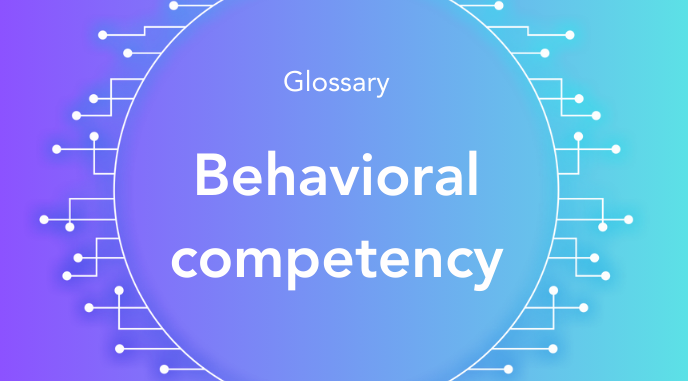- glossary
Behavioral competency refers to the set of behaviors, attitudes and skills that contribute to an individual's ability to perform their job effectively. These competencies, which include communication, teamwork, problem-solving, leadership, adaptability, and emotional intelligence, are measurable patterns of thought, emotion, and behavior that align with the goals and values of the organization. Focusing on behavioral competencies is crucial for personal and organizational success, as it helps identify and develop high-potential employees, enhances individual and team performance, ensures cultural fit, and prepares future leaders.
By emphasizing behavioral competencies, organizations can build a more competent, motivated, and cohesive workforce, ultimately leading to better business outcomes. These competencies are not only essential for effective talent management but also for fostering a positive work environment where employees' behaviors align with the organization's values and culture.
Details:
Components: Behavioral competencies typically include attributes such as communication skills, teamwork, problem-solving abilities, leadership, adaptability, and emotional intelligence.
Assessment: These competencies are often assessed through methods like behavioral interviews, performance evaluations, 360-degree feedback, and psychometric tests. Specific behaviors are identified and measured to determine an employee’s proficiency.
Frameworks: Organizations may use competency frameworks that outline the expected behaviors for various roles and levels within the company. These frameworks help in recruitment, development, and performance management processes.
Development: Employees can develop their behavioral competencies through training programs, coaching, mentorship, and on-the-job experiences. Continuous feedback and personal development plans are essential for enhancing these skills.
What are Examples of behavioral competency?
-
Effectively conveying information, listening actively, and engaging in meaningful dialogues.
-
Collaborating with others, respecting diverse perspectives, and contributing to group efforts.
-
Inspiring and guiding others, making strategic decisions, and fostering a positive work environment.
-
Examples:
-
Demonstrating strong interpersonal skills by building positive relationships and managing conflicts.
-
Leadership that motivates, mentors, and directs teams towards achieving goals.
-
Practicing teamwork by working collaboratively and supporting colleagues to achieve common objectives.
-
Exhibiting clear and open communication, ensuring mutual understanding and effective exchange of ideas.

.png?width=50&height=50&name=Team%20HONO%20logo-01%20(1).png)



